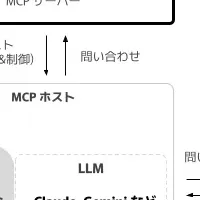
Commvault Enhances Cyber Resilience for Red Hat OpenShift Virtualization Workloads
In a significant advancement for cloud-native technologies, Commvault has recently expanded its support for virtual machines (VMs) on Red Hat OpenShift Virtualization, emphasizing the growing need for enhanced cyber resilience in a rapidly evolving tech landscape. This move comes as organizations increasingly adopt containerized workloads, positioning Commvault as a leader in delivering unified data protection across hybrid environments.
According to market predictions by Gartner, by 2027, 90% of Fortune 2000 companies will utilize container management tools. Furthermore, the Containers as a Service (CaaS) market is expected to approach $44 billion by 2034. This dramatic growth underscores the importance of integrated data protection systems, as enterprises face the dual challenges of maintaining operational continuity amidst threats such as ransomware and effectively managing complex data environments. Traditional disparate tools for managing VMs and containers often complicate these processes, leading to potential duplication of efforts and increased risks.
Commvault addresses these challenges by providing a robust solution that allows clients to automatically discover, protect, and recover VMs operating on Red Hat OpenShift Virtualization- all within the Commvault Cloud platform. This capability not only streamlines operations for professionals in various tech roles such as DevOps, Site Reliability Engineers (SREs), and IT administrators, but also significantly boosts operational efficiency by consolidating backup processes into a single platform.
Leadership Comments: Pranay Ahlawat, Chief Technology and AI Officer at Commvault, remarked on the strengthened collaboration with Red Hat, highlighting their mutual goal of providing leading-edge cyber resilience and data protection for enterprises navigating hybrid environments. Ashesh Badani, Senior Vice President at Red Hat, echoed the sentiment, stating that the partnership facilitates enterprise-grade data protection for OpenShift Virtualization workloads, reinforcing customer confidence as they scale their virtualization capabilities.
The new Commvault support for Red Hat OpenShift Virtualization will become available to select early adopters by early summer, with a general release expected by fall 2025. Costing will align with existing Commvault Kubernetes protection models, offering current users a seamless transition to the enhanced capabilities.
This collaboration between Commvault and Red Hat marks a significant step forward in the quest for superior cyber resilience, catering to businesses that strive for agility and security in increasingly complex technological environments. As organizations pivot towards modern application architectures, such offerings will undoubtedly become critical components of their operational strategies.
According to market predictions by Gartner, by 2027, 90% of Fortune 2000 companies will utilize container management tools. Furthermore, the Containers as a Service (CaaS) market is expected to approach $44 billion by 2034. This dramatic growth underscores the importance of integrated data protection systems, as enterprises face the dual challenges of maintaining operational continuity amidst threats such as ransomware and effectively managing complex data environments. Traditional disparate tools for managing VMs and containers often complicate these processes, leading to potential duplication of efforts and increased risks.
Commvault addresses these challenges by providing a robust solution that allows clients to automatically discover, protect, and recover VMs operating on Red Hat OpenShift Virtualization- all within the Commvault Cloud platform. This capability not only streamlines operations for professionals in various tech roles such as DevOps, Site Reliability Engineers (SREs), and IT administrators, but also significantly boosts operational efficiency by consolidating backup processes into a single platform.
Key Benefits for Customers
- - Robust Cyber Resilience: Commvault ensures air-gapped and immutable backups, allowing for advanced recovery options tailored to VMs on Red Hat OpenShift Virtualization. This feature is indispensable for maintaining business continuity and protecting against cyber threats.
- - Faster Recovery Options: The solution allows for quick restoration of VMs, permitting both in-place and out-of-place recovery, including VM configurations essential for rapid deployment and minimizing downtime during outages.
- - Unified Protection: Customers can manage and protect both legacy and cloud-native workloads through one platform. Such integration reduces operational complexity by eliminating the need for multiple tools and consequently lowering the total cost of ownership (TCO).
- - Cost Efficiency: By removing the need for separate backup infrastructure or distinct tools for VMs, businesses can not only slash their operational costs but also enhance the efficiency of administrative tasks.
Leadership Comments: Pranay Ahlawat, Chief Technology and AI Officer at Commvault, remarked on the strengthened collaboration with Red Hat, highlighting their mutual goal of providing leading-edge cyber resilience and data protection for enterprises navigating hybrid environments. Ashesh Badani, Senior Vice President at Red Hat, echoed the sentiment, stating that the partnership facilitates enterprise-grade data protection for OpenShift Virtualization workloads, reinforcing customer confidence as they scale their virtualization capabilities.
Availability and Future Prospects
The new Commvault support for Red Hat OpenShift Virtualization will become available to select early adopters by early summer, with a general release expected by fall 2025. Costing will align with existing Commvault Kubernetes protection models, offering current users a seamless transition to the enhanced capabilities.
This collaboration between Commvault and Red Hat marks a significant step forward in the quest for superior cyber resilience, catering to businesses that strive for agility and security in increasingly complex technological environments. As organizations pivot towards modern application architectures, such offerings will undoubtedly become critical components of their operational strategies.
Topics Business Technology)










【About Using Articles】
You can freely use the title and article content by linking to the page where the article is posted.
※ Images cannot be used.
【About Links】
Links are free to use.